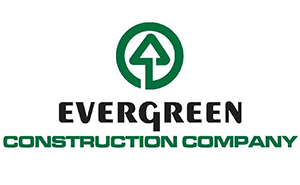
The Low Income Housing Tax Credit (LIHTC) program is the largest source of federal financing for the development of affordable housing. Each year, the IRS allocates the competitive 9% tax credits to state housing finance agencies, who then distribute the credits to projects based on a rigorous application process. The program incentivizes the development of affordable housing by providing investors with lucrative dollar-for-dollar reductions in their tax liability. In turn, the project must provide affordable rents to low-income families for at least 30 years.
In our state, the North Carolina Housing Finance Agency (NCHFA) oversees the scoring and awards process. Each year, developers submit applications for projects across the state. Applications are scored according to the annual Qualified Allocation Plan and NCHFA awards LIHTC credits to the highest scoring applications each August.
Since the first application cycle in 1987, the LIHTC program has financed 2,482 projects across 97 of North Carolina’s 100 counties. As many of the program’s earliest projects begin to age out of the 30-year period of mandated affordability, some housing experts are concerned that the loss of legally mandated affordable units will eventually outpace the supply of new units with mandated affordability coming on the market, effectively decreasing the supply of affordable housing at a time when affordable units for low-income families are already in short supply.
Recently, NCHFA released data that outlines the number of LIHTC properties in NC that are approaching the end of their period of mandated affordability. Notable finding from their report indicate that:
- Over the next 10 years, over 15,000 affordable units, or 16% of the North Carolina Housing Finance Agency’s LIHTC portfolio, are expected to age out of their period of mandated affordability;
- At-risk projects and units are concentrated in metropolitan areas and are mostly owned by for-profit developers;
- 9,533 affordable units have already lost affordability; and
- Within the next year, 8 projects will reach the end of their 30-year period of mandated affordability and have no additional subsidies that extend affordability
An amalgam of factors are contributing to the loss of legally mandated affordable units:
- New construction costs are rising, which in turn challenges the scope and feasibility of many LIHTC projects. In essence, as it costs more to build each unit, fewer units will be built.
- Issues of noncompliance with the affordability mandate: As LIHTC units command the higher ends of their allowable rents, owners may want to cash in and sell projects sooner. Trying to enforce the deed restrictions on affordability will become challenging as owners change hands more often.
- LIHTC developments approaching the end of their period of affordability may have aging owners looking to sell. For-profit developers are aware of this and are eager to make offers, flip the units, and increase rents.
Subsidies and tax credits alone are not likely to solve the issue of expiring units going offline at a time when we need more affordable housing, not less. Policy solutions will likely be needed to take preventative measures to prevent the loss of units. While this will not be addressed in this budget cycle, the Coalition is interested in building consensus around solutions for the 2023 Long Legislative Session.








